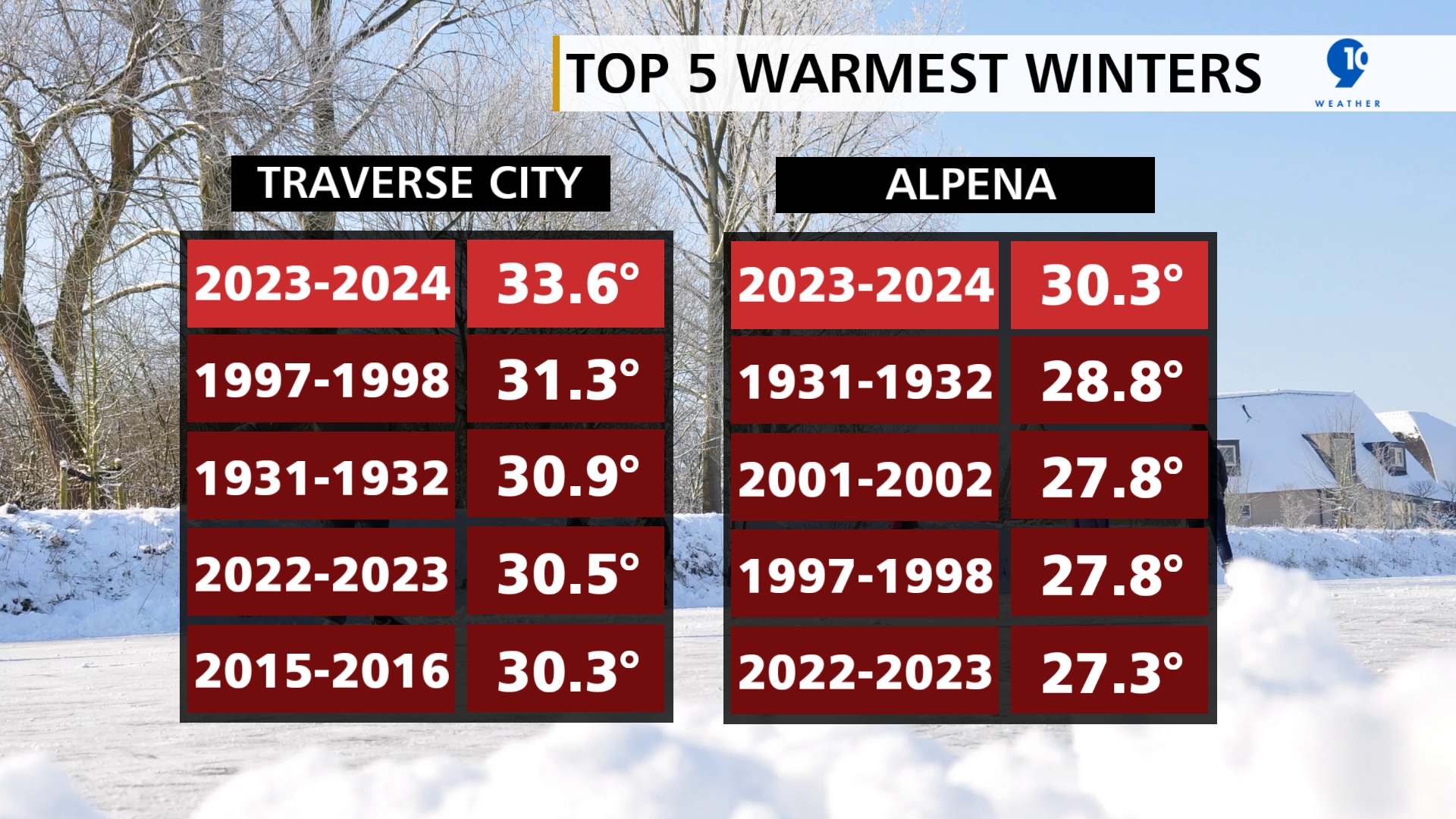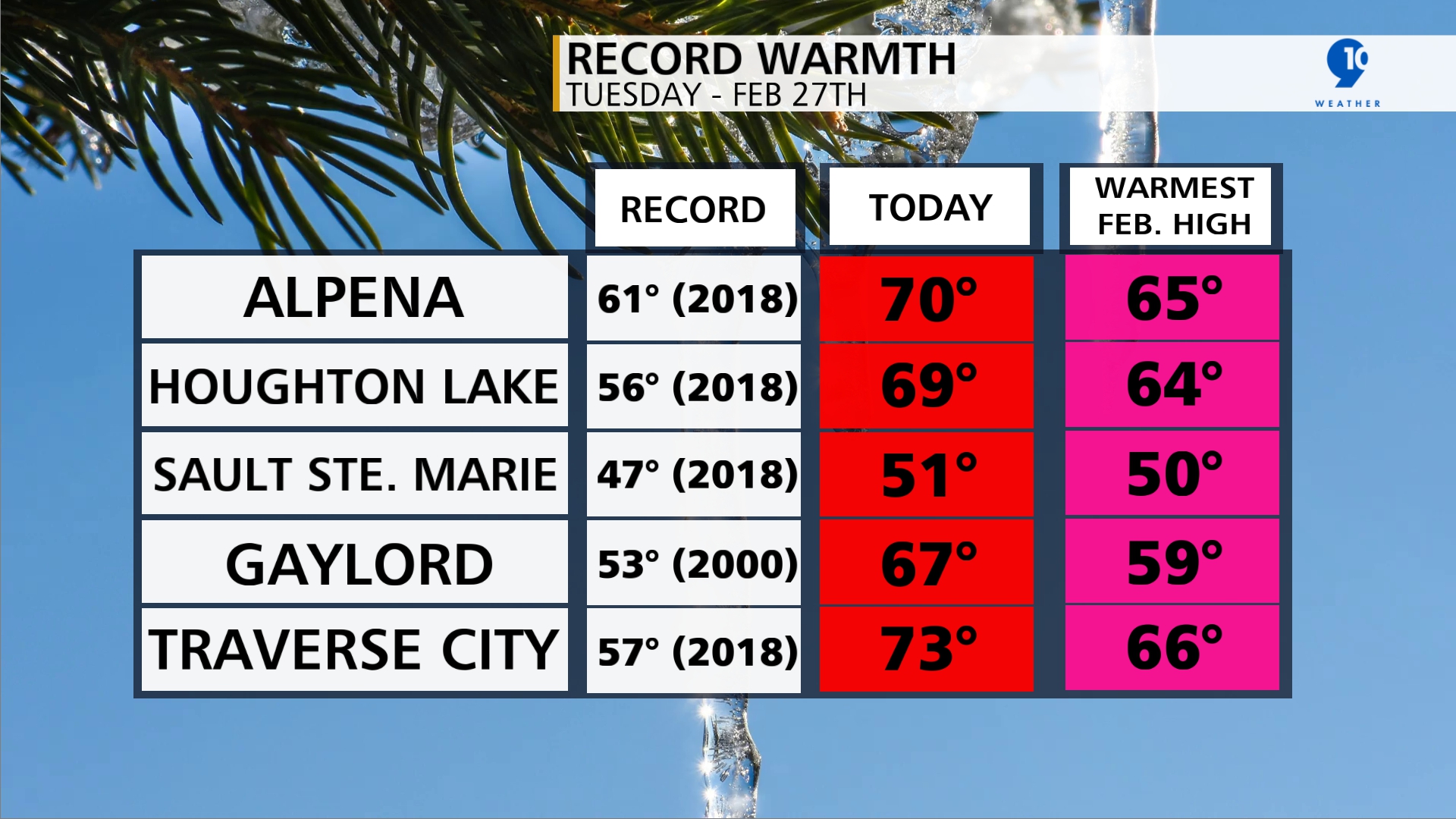When you think of wintertime in Northern Michigan, snowy conditions and cold temperatures probably come to mind.
An average winter normally brings around 50″-150″ of snow across Northern Michigan and an average snow depth of around 40″-110″ by the end of the season. Average highs are generally in the mid-20s to low 30s and average lows range from the mid-20s to mid-teens. The months of December-February also tend to be some of the cloudiest out of the year, and days are at their shortest.
To sum things up, Northern Michigan is normally snow-covered and frigid.
This photo was taken after a system in early January. It brought conditions you would normally expect for the middle of winter in Northern Michigan!
This winter was certainly NOT average by any means, in fact, it was record-breaking! Starting with temperatures, this was the warmest winter on record for ALL NWS reporting sites since reliable records began. While there were spurts of frigid air (such as the surge of cold air we saw between Jan. 14-20), overall temperatures remained well above average.
Feb. 27 was particularly notable for temperatures with ALL NWS reporting sites breaking their daily high temperature records on this day, all climate sites seeing the warmest February temperature recorded since records began. Both Traverse City and Alpena also experienced their first recorded 70-degree day in February and the earliest occurrence of 70 degrees in a calendar year since records began.
Now, for precipitation and snowfall. To say this winter was lacking in both departments would be an understatement. All NWS reporting sites were low on snow, with Gaylord notably at a -42″ deficit! A majority of the snowfall we saw came in the form of prolonged lake effect events, thanks to the open lakes (which were also quite lacking in ice coverage). Unfortunately, with above-average temperatures taking the reins this year; when snow did fall, it often did not stick for a long time. By the time we made it to the end of February, most NWS reporting sites were reporting a snow depth of zero, with the only sites reporting any snow being in the EUP.
Overall this was a warm and dry winter, with temperatures rising far above normal and snowfall falling far below the mark.







